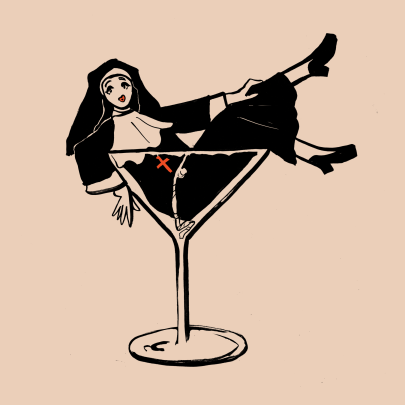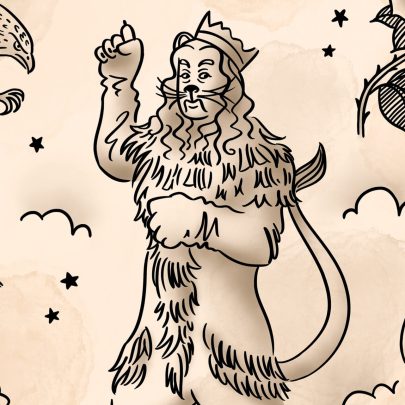Mar 7, 2016 Theatre

All up, it’s nine hours of your life. But this is no high-art slog, the James Plays are populist and rowdy, broken up into very manageable chunks – before you know it, is time for another interval. It manages to satisfy both our wavering attention spans and our desire for long-form storytelling. Yes, this is Netflix theatre. Game of Thrones has been the marketing buzzword, but other than a crossover with actor John Stahl (who played the ill-fated Lord Karstark), the only real similarity is that you should brace yourself for all your favourite characters to die.
For the National Theatre of Scotland Rona Munro has taken bold liberties with a mostly untapped period of Scottish history, full of double crossing, underhanded behaviour, and plots against the crown. It’s The Godfather in Scotland.
It manages to satisfy both our wavering attention spans and our desire for long-form storytelling. Yes, this is Netflix theatre.
A massive f-off sword is lodged into the Aotea stage. A lucky few get seats on the stage, overlooking the action like spectators at a bear-baiting. There are 20 actors in total, who take on a number of different characters across the trilogy. You can’t fault any of them, they are that good.
James I ascended in 1424 aged 29, following an exile of 18 years as a prisoner of the English crown. A dying, snarling Henry V sends him back to Scotland to take up his destiny. Our first James (Steven Miller), a mild-mannered poet, has to get all Michael Corleone on the Scots to prove his leadership and deal with the resentful nobility nipping at his heels. The first play ends with James at his zenith, top dog on the wheel of life. I’m hooked, but I’m not yet satisfied, and I want to load the next episode right away. Unfortunately, that’s it for his reign. If Shakespeare had got his hands on this material he would have shown his downfall too. Viewed as a play in its own right, it’s missing the third act, the tragedy of King James.
James II plays out as a dark parallel of the first one. Having lost his father aged six, young James II (Daniel Cahill), who has a shock red Ziggy Stardust birth mark on his face, spends much of his time hiding in caskets. A prisoner and pawn this time of the Scottish lords, when he ascends he must, like his father before him, work out what kind of King he will be and how to hold onto power. James must look to his Banquos. Whereas James I is more of a straight-up history play, James II takes a genre turn into the young King’s psychological nightmare. The main thrust is the childhood friendship turned rivalry between James and the ambitious young Douglas. He’s that mate who still wants to booze and party when you’re trying to get on with adult responsibilities, like running a country.
James III was also a child when he took the throne, but Munro focusses on the latter part of his reign. Though it looks to be a middle-aged story this time, it turns out he is the most immature of the three. Prioritising wine-tasting over the business of parliament, he’s a playboy swinger king who commissions a choir to follow him around wherever he goes. Genre-wise we are now somewhere between farce and musical theatre, with a little bit of war thrown in near the end, and it is likely that this will be the most divisive of the three. To signal a new era, modern costuming and high heels have snuck through the castle gates, and the men are wearing kilts for the first time. They make it clear how radically they are shifting the style with a Gaelic sing-along of ‘Happy’ by Pharrell Williams before the show.
It’s not all about the Kings, Munro is often more interested in the characters around the periphery, from Sally Reid’s loyal servant Meg, to Stahl’s power-hungry Livingston. James III is actually largely the story of his Queen, Margaret (Malin Crépin), originally of Denmark. She effectively splits up with her husband but keeps the country running while he indulges his frivolities.
Queen Margaret gets the impassioned speech moment, asking her adopted countryman to unite for the good of the country, “What you are frightened of?” You could imagine this going off in Scotland. James I also resonates in terms of the contemporary debates around Scottish independence, as he attempts to course a new identity without subservience to his former English masters. But in New Zealand, without the ability to fall back on this stirring of Scottish nationalism, the plays are a little more exposed in terms of their storytelling limitations.
What you really need to know is to how to see them. The Festival say that each play is stand-alone, and you can see them in any order, but then they would say that. There’s a certain amount of FOMO that goes into ticket-buying decisions for this. Completionists who know they won’t be able to see them all will be reluctant to start. So, in order of recommendation:
- All Three. They are made for this. The legacies of their fathers impact their present. You can see them over Wednesday, Thursday and Friday nights this week, but your best option is the full day on Saturday 12 March when they are played in sequence starting from midday. You really should. This will be the theatre event you’ll be talking about for the rest of the year.
- If you only do two, it needs to be James I and II. They talk to each other the most, and James II brings this particular story to a satisfying close. You won’t be missing too much without three.
- If you can only do one, what should you prioritise? James III, because of its jump in time (and tone), is the one that best stands on its own feet, though it’s not the best one (it’s The Godfather III of this sequence), though Queen Margaret’s story is very engaging. It depends on your answer to this question: is a Scottish cover of the Human League’s ‘Don’t you want me’, complete with bagpipes, your idea of a good time? Yes, great, otherwise, James II is the play for you. In its original season this was the least favourably received, but after rewrites it is definitely the strongest. While admittedly it is the least stand-alone (if you only see this you might wonder why Blythe Duff from Taggart is locked up in a tower), it has the most thrilling of the stories, and the best James.
The James Plays are a rare opportunity to see high-quality work with a large scope, both in staging and storytelling. They are a totally gripping watch, though I did feel short-changed emotionally. The characters don’t earn our compassion. After investing all this time I want more of a cathartic release. Treat these as a guilt-free soap opera. It is a great time in the theatre.
Binge away.
The James Plays, ASB Theatre, March 5-12.
Photo: David Eustace.
Read more: Simon Wilson on the significance of The James Plays.





